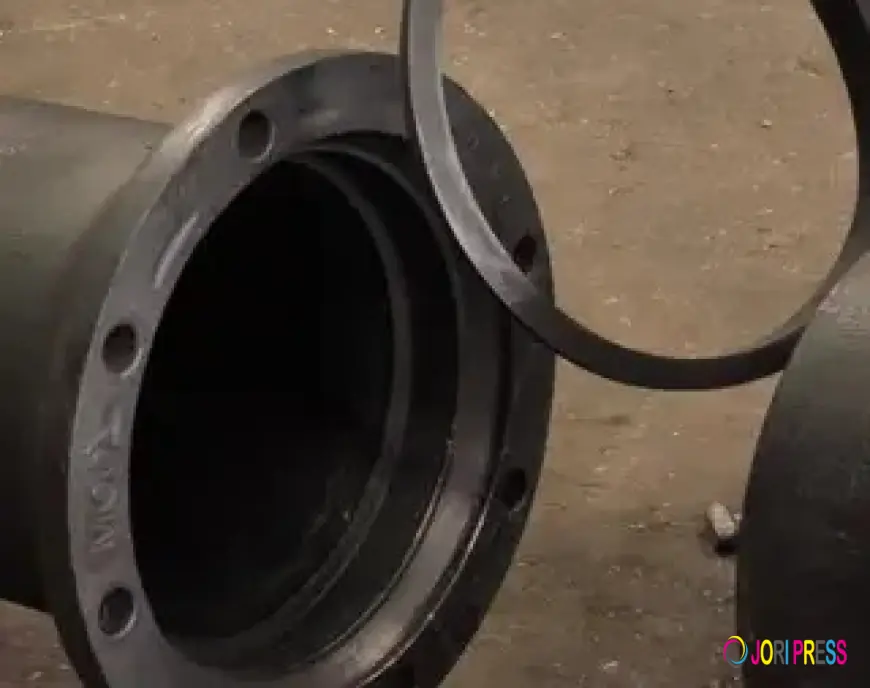High-Temperature Creep in Sealing Gaskets: Causes, Effects, Material Selection, and Maintenance Strategies
High-Temperature Creep in Sealing Gaskets: Causes, Effects, Material Selection, and Maintenance Strategies

In modern industrial production, piping systems are essential, and flange connections are one of the most critical components ensuring system integrity. Although bolted flange connections designed according to current standards typically meet sealing requirements under normal operating conditions, their sealing reliability can be severely compromised in extreme environments—especially under high temperatures and high pressures.
Under these conditions, the combined influence of internal pressure, temperature, and time can lead to sealing failure. Once leakage occurs, the consequences may include material loss, energy waste, environmental contamination, and even catastrophic accidents. As a result, sealing requirements for equipment and pipelines have become increasingly stringent, with gasket creep emerging as a major factor responsible for sealing failures in high-temperature applications.
Impact of High-Temperature Creep on Gasket Sealing
Among all the variables affecting gasket performance, high-temperature creep is one of the most significant. It not only influences the sealing capability of the gasket but can initiate a chain reaction that causes complete failure of the sealing system.
1. What Is Creep and Why Does It Matter?
Creep is a time-dependent deformation that occurs when a material is subjected to continuous load. For gaskets, creep is directly related to:
-
Temperature
-
Time under load
-
Initial bolt stress
-
Gasket thickness
-
Flange design
The slower the creep rate, the higher the remaining compressive stress, and the better the sealing performance.
At high temperatures, creep accelerates. In many high-temperature bolted flange failures, inadequate material strength is rarely the cause. Instead, stress relaxation due to gasket and bolt creep is the primary culprit. As the gasket deforms over time, the residual compressive stress drops. Once it falls below the minimum sealing stress, leakage occurs.
Even after external load is removed, creep deformation continues—indicating that creep is irreversible and time-dependent.
2. How High-Temperature Creep Causes Sealing Failure
When gaskets operate at elevated temperatures:
-
Gasket creep increases
-
Bolt elongation occurs
-
Residual compressive stress decreases
-
Flange separation begins
-
Sealing integrity is lost
Gasket stress must remain above a certain threshold to maintain sealing. In high-temperature environments, gasket creep is often the leading cause of stress loss. Once the residual stress becomes insufficient, fluid leaks through the flange joint.
Failure Modes of Sealing Gaskets and the Role of Creep
High temperatures alter both the physical and mechanical properties of gasket materials, contributing to several common failure modes.
1. Typical Gasket Failure Modes
Under high temperature, gaskets may experience:
a. Creep-relaxation failure
Loss of stress due to time-dependent deformation.
b. High-temperature recovery failure
Reduced ability to rebound and maintain contact pressure.
c. High-temperature strength failure
Material softening, cracking, or structural breakdown.
2. Interaction Between Creep and Stress Relaxation
Creep and stress relaxation are related phenomena:
-
Creep → deformation increases under constant stress
-
Stress relaxation → stress decreases under constant deformation
At high temperatures, gasket materials undergo:
-
Thermal aging
-
Structural degradation
-
Release of manufacturing stresses
-
Material softening
These changes accelerate creep relaxation. Once residual compressive stress falls below the sealing requirement, leakage occurs. Although both stress and temperature affect creep, temperature has a significantly greater impact.
Material Selection for High-Temperature Gaskets
Choosing appropriate gasket materials is critical for resisting creep and maintaining sealing performance under extreme conditions.
1. Advantages of Corrosion-Resistant PTFE Gaskets
Modified or expanded PTFE gaskets offer:
-
Excellent chemical resistance
-
Long-term anti-aging performance
-
Low creep and low cold-flow characteristics
-
Suitability for harsh and corrosive conditions
They are widely used in:
-
Chemical processing
-
Power generation
-
Pulp and paper
-
Refining
-
Hydrocarbon pipelines
PTFE gaskets are particularly suitable where corrosion and uneven sealing surfaces are concerns.
2. How High Temperature Changes Gasket Properties
At high temperatures, gasket materials typically experience:
-
Reduced elastic modulus
-
Lower yield strength
-
Increased compression
-
Greater plastic deformation
-
Lower recovery
-
Higher creep rate
These changes increase leakage risk. Under simultaneously high temperature and high pressure, gaskets may even be pushed out of the flange—causing sudden failure.
3. Limitations of Graphite-Metal Spiral Wound Gaskets
Graphite spiral wound gaskets reinforced with stainless steel rings are commonly used, but they have weaknesses in environments containing sulfur or chloride:
-
Stainless steel inner rings may undergo stress corrosion cracking
-
Excessive sulfur or chloride in graphite may cause sudden fracture of metal windings
-
Once cracked, the gasket loses structural integrity
In such environments, special solutions are required:
-
High-alloy metallic gaskets
-
Corrosion-resistant windings
-
Specially treated composite gaskets
Correct material selection is essential to avoid catastrophic failures in sulfur- or chloride-rich environments.
Maintenance of Gaskets in High-Temperature Systems
Even the best gasket materials degrade over time under high temperatures. Proper maintenance practices are essential to ensure continuous sealing performance.
1. Caution with Thermal Retightening
As gasket materials soften and creep at high temperature, retightening bolts may seem like a solution. However:
-
Aged gaskets may crack during retorquing
-
Over-tightening may cause sudden rupture
-
Bolt relaxation may not be fully recoverable
Thermal retightening should be performed only:
-
With controlled torque
-
At appropriate temperature stages
-
Under professional supervision
2. Importance of Regular Inspection and Replacement
Scheduled maintenance is essential:
-
Inspect gaskets for deformation, aging, corrosion, and structural damage
-
Replace gaskets based on service time and operating severity
-
Avoid reusing gaskets in high-temperature systems
Regular inspection helps prevent unexpected leaks and ensures safe, stable operation.
Conclusion
High-temperature creep is a critical challenge in industrial sealing systems. It affects gasket performance, reduces residual compressive stress, and can directly lead to sealing failure under extreme conditions. To minimize risk:
-
Choose materials with excellent anti-creep properties (e.g., modified PTFE)
-
Avoid materials susceptible to sulfur/chloride corrosion
-
Ensure proper installation and bolt load control
-
Implement regular inspection and maintenance
-
Apply thermal retightening with caution
As sealing technology evolves, new high-temperature, creep-resistant gasket materials will further enhance the reliability and safety of industrial piping and equipment.
What's Your Reaction?
 Like
0
Like
0
 Dislike
0
Dislike
0
 Love
0
Love
0
 Funny
0
Funny
0
 Angry
0
Angry
0
 Sad
0
Sad
0
 Wow
0
Wow
0

















































